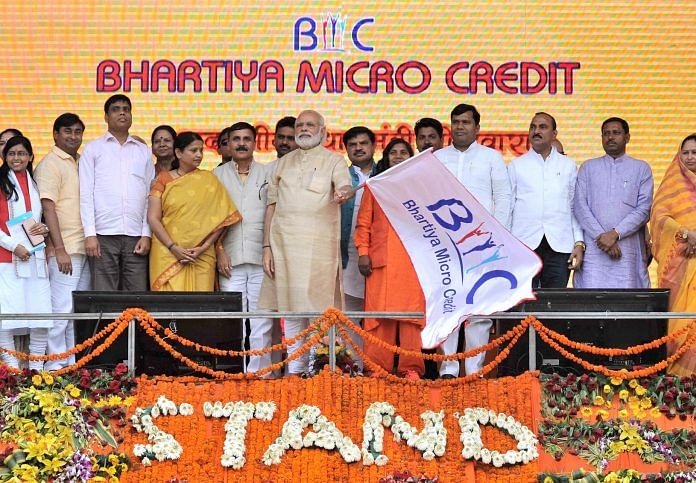PM Modi’s pet project to boost entrepreneurship among SCs, STs and women has reached only 12% of targeted beneficiaries in state.
Mumbai: The NDA government’s push to encourage entrepreneurship among the Scheduled Castes (SCs), Scheduled Tribes (STs) and women has yielded a lacklustre response in Maharashtra so far.
Nearly two years since the scheme’s launch, the state has achieved just 12 per cent of its target under Stand-Up India, a pet project of PM Narendra Modi that seeks to provide low-interest loans of Rs 10 lakh to Rs 1 crore to at least one borrower from the SCs or STs and one woman, per bank branch, to set up a greenfield enterprise in the manufacturing, services or trading sector. The idea, in Modi’s words, is to turn “job seekers into job creators”.
According to data from Maharashtra’s State-Level Bankers’ Committee (SLBC), by 15 February 2018, 2,904 borrowers had received Rs 486 crore in loans under the scheme, against a target of 22,890. The total loans sanctioned under the scheme stand at Rs 909.2 crore, for 3,962 accounts.
The state’s SC and ST population is estimated at 1.32 crore and 1.05 crore, respectively. Women comprise 48 per cent of Maharashtra’s population.
80 branches, 0 beneficiaries
Incidentally, five urban centres accounted for most of the loans sanctioned under the scheme in Maharashtra, with largely rural districts, some of which have a significant tribal and SC population, registering low numbers.
By 24 July 2017, 1,294 of the borrowers given loans were from the districts of Mumbai city, Pune, Nagpur, Thane and Kolhapur. Of these, 488 borrowers who together received Rs 105.34 crore were from Mumbai city.
People in the districts of Hingoli, Parbhani, Palghar, Nandurbar and Washim have benefited the least.
Nandurbar, where, according to the 2011 census, tribals account for 69.3 per cent of the population, had just one beneficiary across its 77 bank branches till July 24, 2017.
Washim, which has the third highest population of SCs in Maharashtra at 19.2 per cent, had six borrowers under the scheme.
Hingoli, where SCs comprise 13 per cent of the population, has 80 bank branches but not one beneficiary.
Where the problem lies
Bank officials say they have struggled to find beneficiaries. “The lack of experience in case of first-time entrepreneurs and the non-availability of quality proposals in rural and, at times, even semi-urban areas are major issues,” said a senior banker.
As a solution, he suggested the expansion of the scheme to cover loans for existing units that had not availed of credit. Bank officials said reducing the lower end of the loan threshold to Rs 5 lakh, especially for prospective beneficiaries in rural areas, could help as well.
However, Milind Kamble, chairman of the Dalit Indian Chamber of Commerce & Industry (DICCI), said the problem lay elsewhere.
“Banks have a lot of prejudices lending to Dalit and tribal entrepreneurs, questioning their repayment capacity even though there is a collateral security by the Union government as part of the scheme,” he added.
“Also, banks reject outright proposals they deem unviable, when they should instead handhold applicants and advise them on how to make these viable,” Kamble said.
With the Lok Sabha and Maharashtra assembly elections just a year away, government officials have asked bankers to make all-out efforts to meet targets under the scheme.
A senior official from the SLBC said, “Awareness about the scheme is increasing. Banks’ performance is being reviewed regularly by government authorities and the SLBC. Specific guidelines to identify beneficiaries have been given to field authorities, who have been advised to achieve the target during the current year.”




Either a project is viable, or it is not. Directed lending, coupled with targets, can create a lot of NPAs.